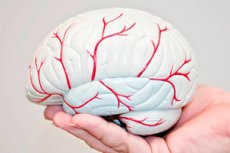New publications
Study finds that severe ischemic strokes are rare among patients
Last reviewed: 02.07.2025

All iLive content is medically reviewed or fact checked to ensure as much factual accuracy as possible.
We have strict sourcing guidelines and only link to reputable media sites, academic research institutions and, whenever possible, medically peer reviewed studies. Note that the numbers in parentheses ([1], [2], etc.) are clickable links to these studies.
If you feel that any of our content is inaccurate, out-of-date, or otherwise questionable, please select it and press Ctrl + Enter.

A new study from the University of Cincinnati provides additional information about how few patients with severe ischemic strokes there are compared to the overall stroke population in the region.
Dr. Yasmin Aziz of the University of Cincinnati will present a poster of the team's findings during the European Stroke Conference (ESOC) in Basel, Switzerland.
Ischemic strokes, the most common form of stroke, are caused by a lack of blood flow and oxygen to certain areas of the brain. When a stroke patient arrives at the hospital, Aziz explains, they undergo a CT scan, which helps doctors assess the extent of damage caused by the stroke using a 1-10 scale.
“Low scores indicate larger strokes, while high scores indicate smaller ones,” said Aziz, an assistant professor of neurology and rehabilitation medicine at the UC College of Medicine and a neurologist at the UC Gardner Neuroscience Institute. “Much of our early treatment options and long-term prognosis depend on this simple score, since strokes due to blood clots can get worse without intervention.”
Aziz said the study asked a simple question: How many patients in the region are admitted to hospital with low scores?
Using data from the ongoing Greater Cincinnati/Northern Kentucky Stroke Study, the team found that nearly 90% of all patients admitted to the hospital within 24 hours of symptom onset had minimal ischemic damage on their CT scans, or scores of 9-10 on the scale.
Narrowing the data down to the most severe type of stroke caused by blood clots in the brain, the team found that about 14% of these patients had the most severe damage, or scores of 0-2 on the scale.
“Patients with low scores due to major strokes require significant health care resources to care for them,” Aziz said. “A lot of research over the last two years has been focused on whether we can treat patients with really low scores. Our results show the rarity of these severe strokes in the real-world population, rather than in the tightly controlled setting of clinical trials.”
Aziz said she was not surprised by the results, as the frequency of patients with low scores was consistent with previous estimates.
"Fortunately, most strokes are not caused by large vessel occlusions or blood clots in the vessels that supply large areas of the brain," she said.
A series of recent clinical trials have shown the benefits of removing clots in patients with severe strokes, and the research community is working to adapt to this paradigm shift, Aziz said. The study’s data on how often these strokes occur is part of a larger puzzle to optimize research and care for all patients, she added.
The study is one of the first publications to come out of the Population-Based Assessment of Radiological Brain Health in Stroke Epidemiology (APRISE) study, an offshoot of the Cincinnati Area Stroke Study that adds a neuroimaging component to data collection and research.
“Our team, comprised of internationally recognized experts in stroke epidemiology, radiology, and acute stroke care, is thrilled to use APRISE to deliver the highest quality research in our field,” said Aziz. “We are deeply grateful to the community for their participation in this research, which will be shared with experts from around the world at ESOC. Together, we look forward to pushing the boundaries of care for patients with stroke.”
Aziz will present a paper, "Early ischemic changes in late-presenting ischemic stroke are rare: the Greater Cincinnati Northern Kentucky Stroke Study population," on May 15 at ESOC.
